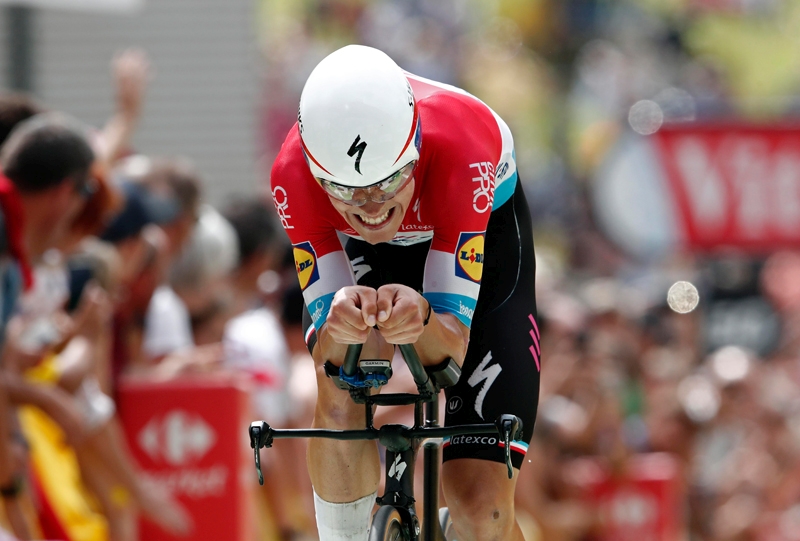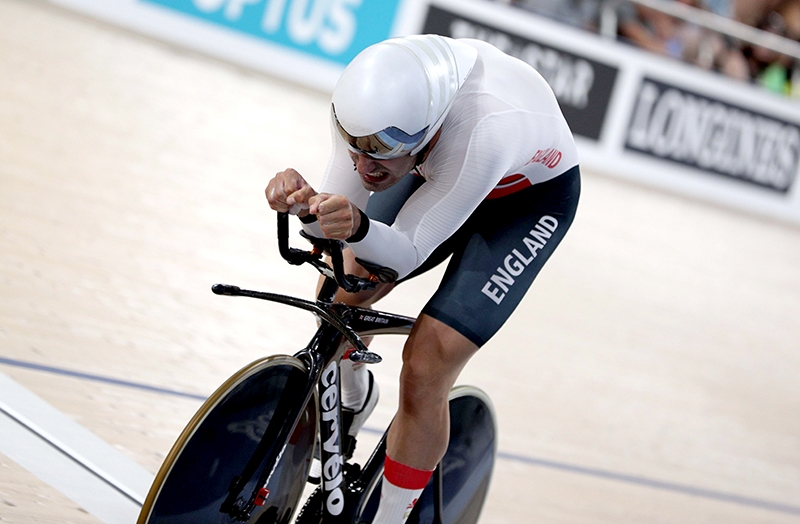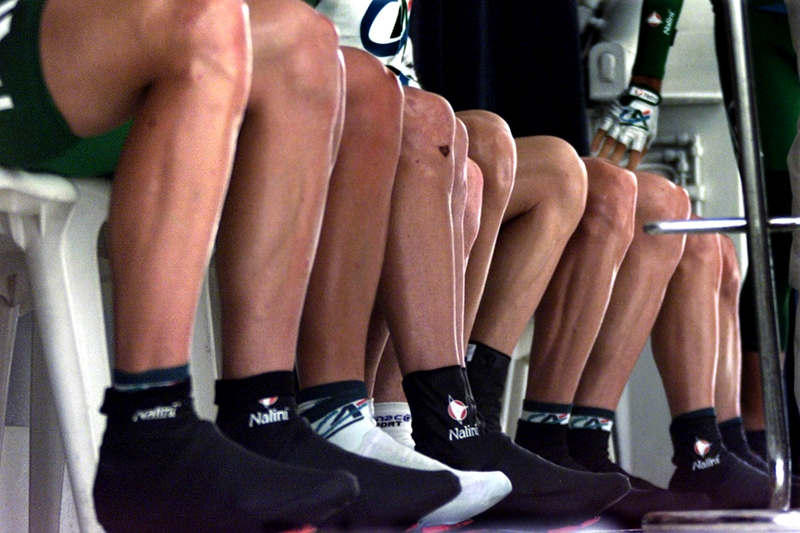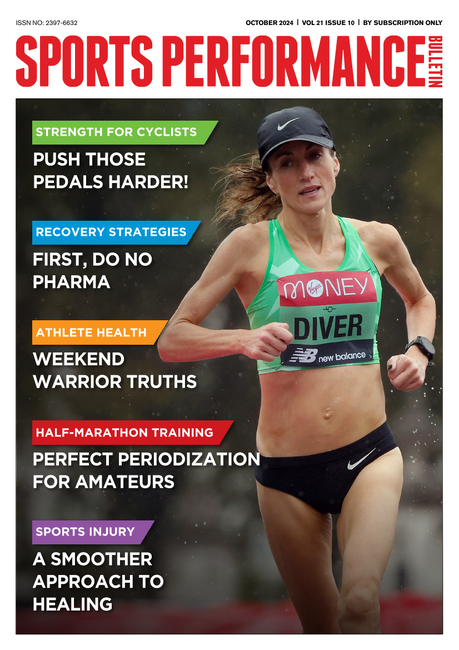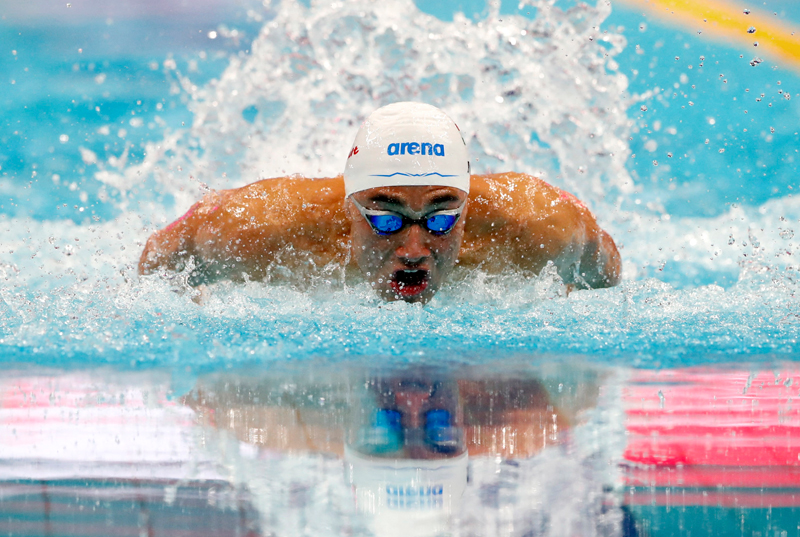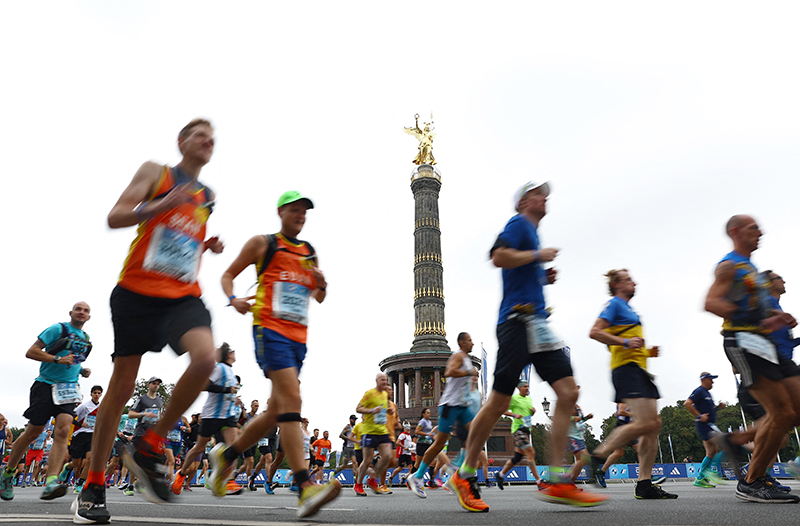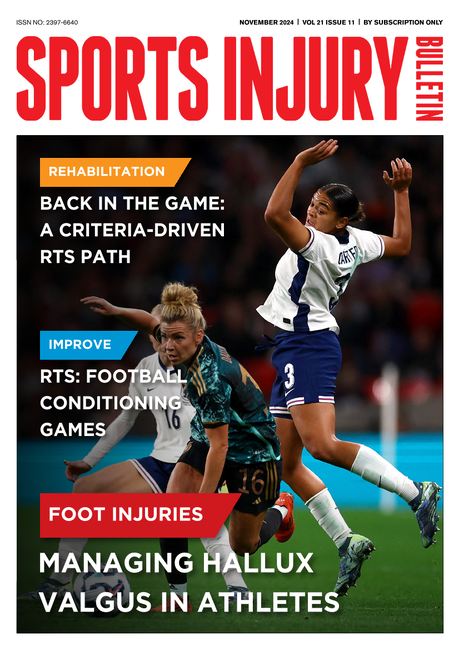You are viewing 1 of your 1 free articles. For unlimited access take a risk-free trial
Chainring shape and pedalling efficiency: going round in circles?
Can non-circular chainrings improve your cycling efficiency? Andrew Hamilton looks at what the recent research has to say
Can non-circular chainrings improve your cycling efficiency? Andrew Hamilton looks at what the recent research has to say
The last decade has seen an explosion in new bike technologies, particularly in road bike design. However, one area that’s remained largely unchanged is chainring design, which has traditionally used circular chain rings to drive the chain and turn the rear wheel. Despite this, some sports physiologists and component manufacturers and have claimed that the use of non-circular chain rings (containing a very slight ellipse or oval), might be better suited to the biomechanical requirements of pedalling, resulting in more force delivered to the crank for less perceived effort from the rider. This approach was utilised in Shimano’s ‘Biopace’ chainrings for example, which became popular for a while in the 1980s and early 90s. The theory was that by using a chainring with its peak effective diameter when the cranks are level, this provided a rider with maximum leverage over the crank during the power stroke, and thus better use could be made of the rider’s power output. However, many cyclists have remained unconvinced as to the benefits of ovalised chainrings and there’s conflicting evidence in the literature.
Ovalised vs. circular chainrings
In one study, twelve male elite cyclists performed two incremental cycling tests separated by 48 hours - one with round chainrings and one with ovalised chainrings(1). During the test, the workload was increased by 25 watts every three minutes until the point of exhaustion. After the incremental test, four intermittent 20-second maximal sprints with a 60-second recovery period in between were performed. Heart rates, power outputs, oxygen consumption and blood lactate levels were monitored throughout the tests.
The results showed that during the short sprints, average power output was slightly increased with the ovalised rings. However, the gains were not large enough to be considered statistically significant – ie they could have occurred simply as the result of a ‘statistical blip’. There were also no significant differences in blood lactate (a measured of muscle fatigue during exercise), power output, oxygen consumption or heart rate between oval "Q-rings" and conventional chainrings. The researchers concluded that the slight (but not statistically significant) tendency towards improved power output with the ovalised chainrings could result in a marginal improvement during on-road cycling performance but that more studies would be needed to confirm any benefits.
Lower fatigue
Although this study was inconclusive, some earlier research into ‘ovalised’ chainring design did seem to show benefits. In one study, ten well-trained cyclists cycled with an ovalised (Biopace) and a circular chainring at 180 watts power output at 65 and 90rpm, during which their crank torque profiles were measured(2). Although the riders’ crank torque profiles were similar between the two chainrings, blood lactate concentration (a measure of fatigue) was slightly but significantly lower with the ovalised ring compared to the conventional circular rings. The researchers suggested that the slightly lower blood lactate concentration when using the Biopace rings could be due to the slightly reduced muscle activity observed where peak crank torque occurred during each crank rotation – supporting anecdotal observations of some cyclists that pedalling using non-circular chainrings feels easier for a given pace compared to conventional circular chainrings.
Power and sprinting
Another study looked at effects of a non-circular chainrings on sprint performance during a cycle ergometer test. Twenty cyclists performed repeated 8-second sprints in four separate conditions, which were as follows:
- Circular chainring, clipless pedal
- Circular chainring, non-clipless pedal
- Non-circular chainring (‘Osymetric’), clipless pedal
- Non-circular chainring (‘Osymetric’), non-clipless pedal
The important finding of this study was that the maximal power output was significantly higher (+ 4.3%) when using the non-circular chainring – and this was regardless of the shoe-pedal linkage condition. The researchers concluded that the improvement was mainly explained by a significantly higher instantaneous external force that occurring during the downstroke, and that non-circular chainrings can therefore have potential benefits on sprint cycling performance.
In summary
Overall then, it’s fair to say that for endurance riding, the jury is still out on the benefits or otherwise of non-circular chainrings. Try them for yourself by all means but don’t expect guaranteed performance gains, especially if your riding is mainly steady-paced, sub-maximal stuff. For hill climbing and/or maximal effort riding, there’s more evidence that they might help. Also don’t forget that you can always try and improve your existing ‘spinning’ technique with circular rings – for example by practicing applying effort throughout the 360 degrees of crank rotation and using stationary bikes such as ‘Wattbike’, which can display your force/power curve while you spin the cranks thus providing valuable feedback info.
References
- J Sports Sci Med. 2014 May 1;13(2):410-6
- J Physiol Anthropol. 2009 Nov;28(6):261-7
- J Sports Sci Med. 2016 May 23;15(2):223-8
Newsletter Sign Up
Testimonials
Dr. Alexandra Fandetti-Robin, Back & Body Chiropractic
Elspeth Cowell MSCh DpodM SRCh HCPC reg
William Hunter, Nuffield Health
Newsletter Sign Up
Coaches Testimonials
Dr. Alexandra Fandetti-Robin, Back & Body Chiropractic
Elspeth Cowell MSCh DpodM SRCh HCPC reg
William Hunter, Nuffield Health
Keep up with latest sports science research and apply it to maximize performance
Today you have the chance to join a group of athletes, and sports coaches/trainers who all have something special in common...
They use the latest research to improve performance for themselves and their clients - both athletes and sports teams - with help from global specialists in the fields of sports science, sports medicine and sports psychology.
They do this by reading Sports Performance Bulletin, an easy-to-digest but serious-minded journal dedicated to high performance sports. SPB offers a wealth of information and insight into the latest research, in an easily-accessible and understood format, along with a wealth of practical recommendations.
*includes 3 coaching manuals
Get Inspired
All the latest techniques and approaches
Sports Performance Bulletin helps dedicated endurance athletes improve their performance. Sense-checking the latest sports science research, and sourcing evidence and case studies to support findings, Sports Performance Bulletin turns proven insights into easily digestible practical advice. Supporting athletes, coaches and professionals who wish to ensure their guidance and programmes are kept right up to date and based on credible science.
